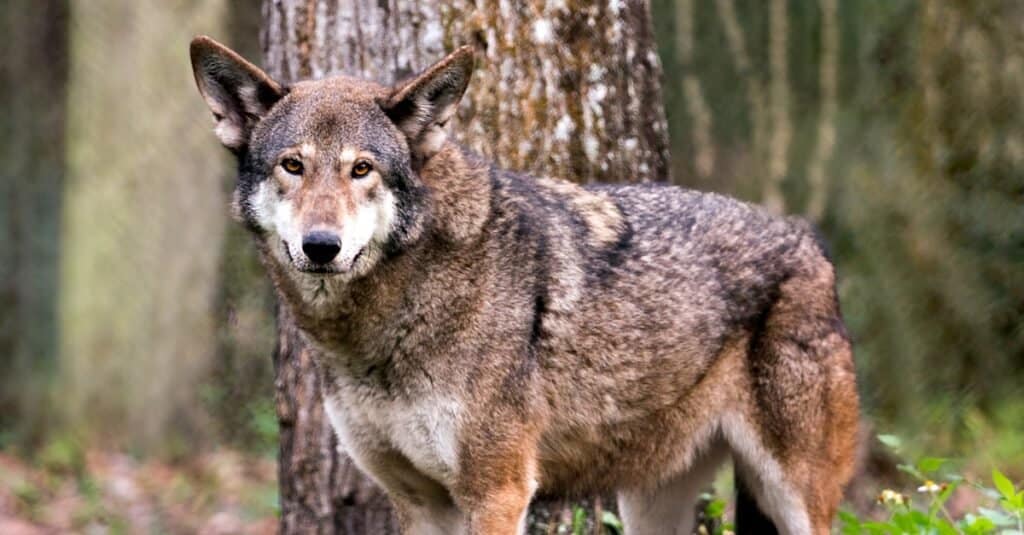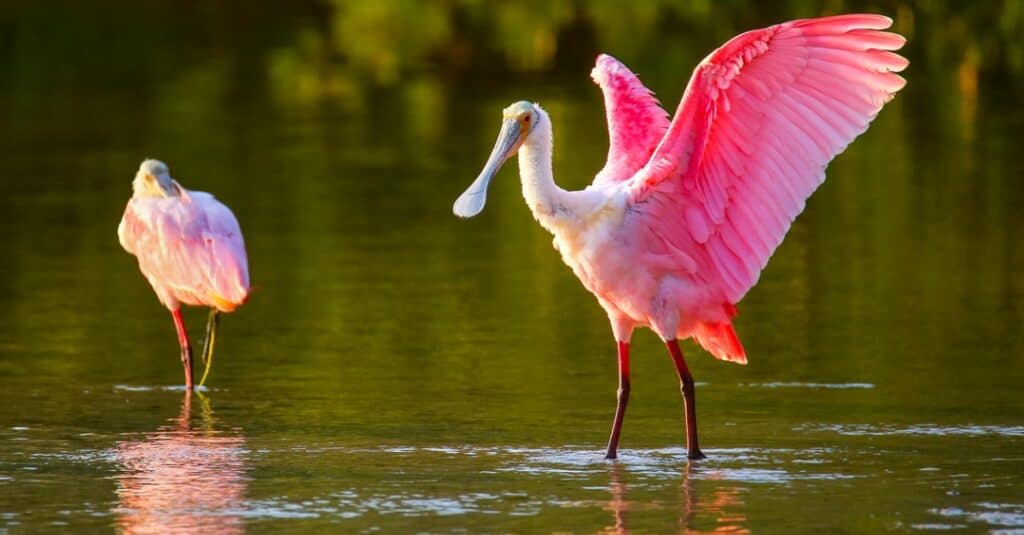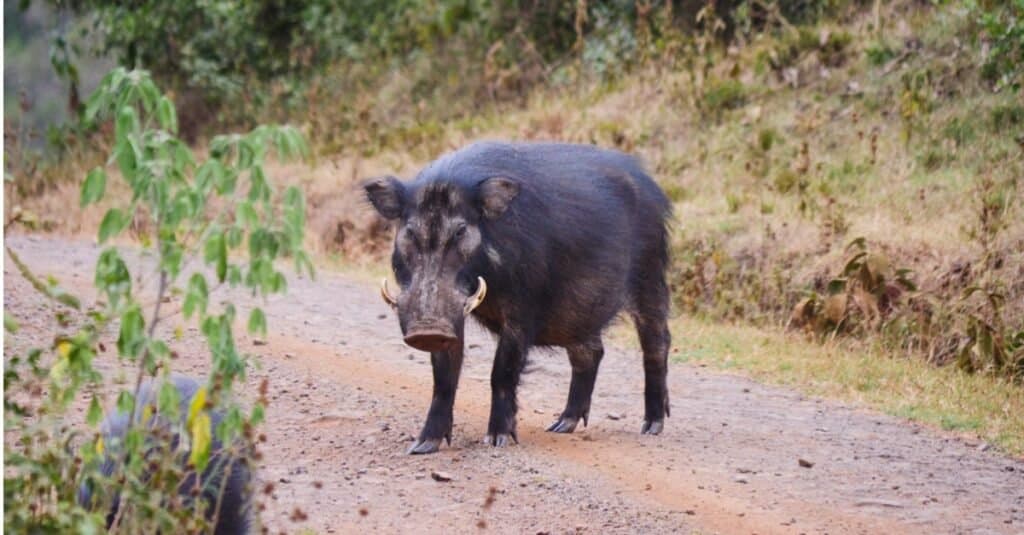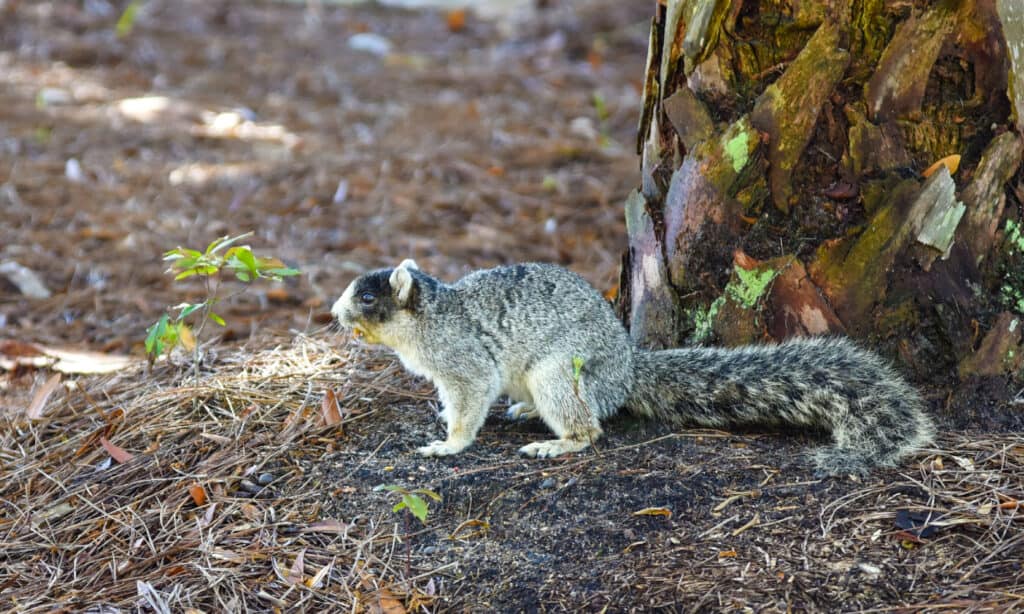South Carolina is known for peaches, golf courses, and miles of the Atlantic coastline. It has a humid subtropical climate and features numerous ecosystems, such as forests, mountains, salt marshes, coastal uplands, and freshwater wetlands. These distinctive biomes offer abundant wildlife, both prey, and predator. Animals adapt over time to thrive in their unique environments; predators need to catch their food, and prey needs to outrun swift and cunning creatures. Discover the fastest animals in South Carolina, including where they live and what makes them so speedy!
1. Golden Eagle – 200 mph

Reaching a max speed of 200 mph. golden eagles are very fast.
©Al Carrera/Shutterstock.com
The golden eagle is one of the largest birds of prey living in the northern hemisphere. It is 50% larger than the bald eagle and features a seven-foot wingspan and shiny golden feathers. Despite golden eagles being fairly common in their range, they are a rare sight in the eastern half of the United States. Golden eagles are occasional winter residents on South Carolina’s coastal plains. These birds are exceptionally fast and agile, reaching 200 miles per hour! They can obtain this max speed when diving for prey, but their regular soaring rate hovers around 30 mph and can go up to 120 when gliding and looking for food. Golden eagles rely on their massive wings and thermals to push them through the air and gravity to give them a boost as they stoop for prey.
2. Mexican Free-Tailed Bat – 100 mph

During level flight, Mexican free-tailed bats can reach 100 mph.
© – License
The Mexican free-tailed bat, also known as the Brazilian free-tailed bat, is a medium-sized flying mammal native to the Americas. The free-tailed bat is locally common across North and South Carolina’s coastal plains, roosting in caves, tunnels, and bridges. These tiny mammals are barely bigger than a human thumb, but they are one of the fastest animals on earth, reaching 100 miles per hour during level flight. These little creatures are built for speed, featuring long, narrow wings and short fur. They can also fly at high altitudes over 10,000 feet and receive a boost in speed from tailwinds.
3. Red Wolf – 46 mph

The red wolf can be found in South Carolina’s wilderness.
©Rejean Bedard/Shutterstock.com
Red wolves are wild canines native to the Southeastern United States, and researchers believe they are actually coyote hybrids. You can find this unique species at several captive centers, but only a handful of wild red wolves remain in South Carolina’s wilderness. This endangered wolf can run up to 46 miles per hour and is a top predator in its environment, traveling up to 20 miles per day to track its prey. Their main targets include small mammals like rabbits, who are also highly swift; red wolves have adapted to outrun their primary food sources.
4. Grey Fox – 42 mph

Grey foxes use their tremendous speed to catch prey.
©iStock.com/johnpane
The grey fox is an omnivorous canine found in North and Central America. This species is abundant throughout most of South Carolina, inhabiting the state’s mixed wooded and open areas. You can also find them in the outer banks and the mountains; their territories may overlap with the red fox. Grey foxes can run up to 42 miles per hour, while the red fox reaches 31 mph. Walking and trotting at a slow pace is their primary mode of travel, but they can run and gallop when hunting or escaping predation, quickly reaching their max speed. The grey fox can also leap onto tree branches and climb up trunks. The number one reason for its speed? To catch prey! They stalk small mammals and pounce on them like cats, swiftly chasing them if need be.
5. Roseate Spoonbill – 35 mph

Waterbirds like roseate spoonbills reach incredible speed during migration or while escaping danger.
©iStock.com/Donyanedomam
Roseate spoonbills are pale pink-wading birds native to North and South America. They forage food in the shallow waters of South Carolina marches, often mixed with other wading bird species. These pink waterbirds are a sight to see as they outstretch their long wings and extend their slender necks as they fly, reaching speeds up to 35 miles per hour. However, they are typically slow-moving birds, only reaching this max speed when fleeing danger or possibly during migration.
6. Wild Hog – 30 mph

Despite their size and appearance, wild hogs can run pretty fast when they need to.
©iStock.com/chingkai huang
Wild boars are an introduced species to the Americas and one of the widest-ranging mammals in the world. The Spaniards released wild pigs during the 1500s, and today they are present in coastal South Carolina. There are also Eurasian wild hogs in Carolina’s mountains. You wouldn’t think it by looking at them, but these hogs are pretty fast and agile. They can jump over four feet and run up to 30 miles per hour, much faster than humans. However, they usually only reach these intense speeds when spooked, often scattering in all directions and getting away from danger.
7. Southern Fox Squirrel – 20 mph

Southern fox squirrels use their speed to escape predators.
©Keith V/Shutterstock.com
The southern fox squirrel is a large rodent native to the Southern United States. They are related to gray squirrels, and only the grey, black, and brown color phases occur in South Carolina. They are somewhat of a rarity in the state, but you can typically find them around coastal forests. These squirrels are speedy and spry, leaping over eight feet and running up to 20 miles per hour on the ground. They can easily outrun the average human and use their speediness to escape dangerous predators.
Up Next:
- Discover the Fastest Animals in Florida
- Discover the Fastest Animals in California
- Discover the Fastest Animals in Illinois
- Discover the Fastest Animals in Tennessee
The photo featured at the top of this post is © Al Carrera/Shutterstock.com
Thank you for reading! Have some feedback for us? Contact the AZ Animals editorial team.






